Sourdough Protein Challah Bread Sticks
These aren’t your average breadsticks. I’ve taken the rich, tender tradition of challah and transformed it into a high-protein, sourdough creation. By replacing some of the classic ingredients with protein-rich alternatives, I’ve created a breadstick that’s not only incredibly delicious but also offers a satisfying, healthier twist. The result? A perfectly fluffy interior with a golden, crunchy, and addictive seeded crust.

This post may contain referral links for products I love.
For The Pleasure Of Eating earns a small commission on these links at no cost to you.
- Why You’ll Love This
- The Ingredients
- Substitutions
- Equipment Used
- How to Make this
- How To Store
- FAQ
- Other Recipes You Might Enjoy
Why You’ll Love This
TL;DR
- A Unique Twist on a Classic: It’s a sourdough version of a beloved traditional challah breadstick, adding a wonderfully complex, tangy flavor you won’t find in yeasted recipes.
- Packed with Protein: I’ve boosted the nutritional value with protein powder and cottage cheese, making these breadsticks more filling and a great source of protein.
- The Best of Both Worlds: Enjoy a perfect balance of textures and flavors—a soft, fluffy interior with a super crunchy, seeded crust and a gentle sweetness that’s not overpowering.
- Highly Adaptable: This recipe is easy to make your own! It offers simple substitutions to make it vegan-friendly or to adjust the sweetness and flavor to your liking.
A Sourdough Version Was Requested
After trying the fabulous Seeded Challah Breadsticks from @kerenruben I was in love! Then someone asked for a sourdough version and I knew I had to create one. Based on the views on IG when I responded to her post, it was clear that wasn’t just one person looking for it, so I decided to go ahead and create a proper recipe.
And while you can absolutely make a pure sourdough version, I added protein to my final one, which I know you’ll adore!
What is Challah Bread?
Challah bread (also called “Hallah”) is a traditionally Jewish bread, often eaten on Shabbat and major Jewish holidays. It’s usually an enriched dough with butter and eggs. And a fair bit of sugar.
Most of the time it’s served in form of a large braid, part of the dough set aside as an offering.
Now, not being Jewish myself, I don’t claim for this to be in any way, shape or form traditional. But I’m sure you’ll love it anyway, as it’s just so tasty!
Soft Challah With Crunchy Seeds
I’m going a slightly different direction here, leaving out the eggs (good news for those battered by egg prices and issues with availability) just as Kerenruben did in her yeast based recipe for the bread sticks. Using oil instead of butter gets this closer to a vegan version. And I’ll give modifications on how to veganize this too.
The dough is divided into smaller portions, twirled into sticks, dunked into a sweet dip and then rolled in a mix of crunchy nuts and seeds, baking the Sourdough challah with protein powder to golden perfection with crunchy crust and a super soft, fluffy interior with gentle sweetness.
Cottage Cheese and Protein Powder for added Nutrition
While I could sure have gone with the egg version (aside from the ethically questionable conditions for chickens) to include a bit more protein, my version has more protein and is easier to “veganize” as we just swap the type of protein powder and the cottage cheese for vegan Greek yoghurt to get very similar results.
| High-Protein Version | Traditional Egg Version | |
| Primary Protein Sources | Flour, Whey, Casein (from cottage cheese) | Flour, Eggs |
| Total Protein (grams) | 208.6g | 164.5g |
| Protein per 100g dough | 13.8g | 10.9g |
If you’d like to read more on the surprising benefits of sourdough in conjunction with protein, I wrote a whole post on the topic.
Less Sugar Than The Original
While Challah is usually a bread leaning towards sweet, I chose to reduce the sugar from the original by about half. You’ll still notice the dough is ever so slightly sweet, in a very pleasant way, but it has less calories from sugar. I’ve made it before with just 20g (mainly because I overlooked the full amount for god knows what reason) and it worked perfectly too.
So, if you’d like to reduce it even further than the 70g I give in my recipe, I’m pleased to report you can go ahead. 😊
Ingredient Notes
As usual, I will go over the ingredients that need notes here. The full list with amounts is in the recipe card below.
The Dough

- Strong white flour – Also called bread flour, is a high protein flour often used when we need the formation of strong gluten structures, mostly in bread.
- Sourdough Starter – Or Levain is what you get when you combine flour and water in a 1:1 weight ratio and leave it to its own devices for about a week, feeding it daily with more of the same. The mixture attracts natural yeasts and lactic acid bacteria, which are responsible for all kinds of fermentation and live everywhere on and around us. If you don’t have your own yet, here is a recipe on how to make it.
It makes this bread really good for you and adds incredible depth of flavor. - Sugar – Not too much, adds a gentle sweetness typical for Challah.
- Oil – I’m using grapeseed oil for this recipe. Traditionally butter would be used, making this and enriched dough (and you can certainly do the same, if you add a tiny bit less water). Oil contributes the same tenderizing effect to the dough, making this such a pleasantly soft experience. Any neutral oil will work.
- Cottage Cheese – We are coming to the decidedly less traditional ingredients! I’ve included cottage cheese in my last 3 sourdough bread recipes that I posted (For example the Sourdough Protein Focaccia with cottage cheese from last week) and found it works rather miraculously in adding both a good amount of protein to the bread and countering the drying effects of protein powder, balancing the bread texture to something really enjoyable and soft with a hint of milky freshness. You can use either the 2% or 4% fat content versions here. Both work great.
- Whey Protein Powder – I use unflavored Whey concentrate from MyProtein in my protein-enriched sourdough bread recipes. (Neither sponsored nor affiliated. Just what works best for me). This adds the other high protein component to the dough.
One of the limiting factors when it comes to adding protein powder to any baked goods is the structure. It soaks up water like a sponge and can, if you add too much, lead to rather dry and tough bread. But in the right dose (I found a maximum of 30g on 500g flour is the sweet spot) it gives the dough strength and leads to a fabulously golden brown crust, owed to the caramelising milk sugar. - Salt – I always use kosher salt, Diamond Crystal to be exact. If you are using sea salt, use half in volume, but the same in weight. It slows down fermentation, leading to a stronger, more flavorful dough and of course balances the flavor. If you ever tried a bread without salt, you know what I mean.
Seed & Nut Coating
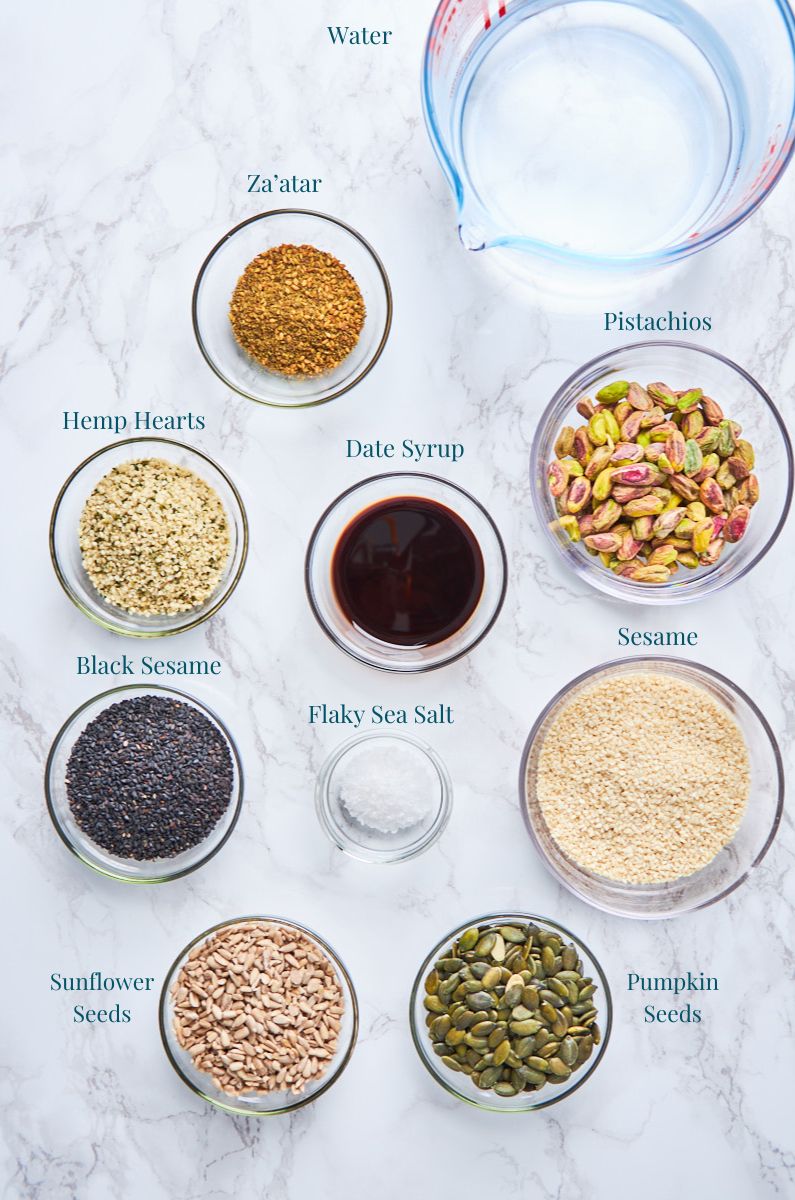
- Date Syrup – This has a molasses-like sweet and fruity flavor that caramelizes into a deeply golden crust and adds gentle sweetness to the breadsticks, making them utterly moreish.
- Seed and Nut mix – Honestly, you can use any odds and ends of seeds and nuts that might be flying around in your cupboards. This is a great recipe to use them up! I love Pistachios, pumpkin seeds, sunflower seeds, sesame seeds and a little bit of Za’atar spice (A middle eastern mix of dried thyme, sesame and sumac) to transform the simple protein challah into crunchy yet soft seeded sourdough bread sticks.
And, to contribute even more protein, I threw in some hemp hearts for good measure.
substitutions
The Dough
- Strong White Flour – I have not tried to make a GF version of this, but if you are looking for estimate ratios that might work, start with the yeasted bread recipe in “The Elements of Baking” and go from there. If you’d like to include whole wheat, you can safely replace 1/3 of the white flour with strong whole wheat flour. Though you might have to add a little more water. The bread will be a little denser and have a slightly nutty flavor, which can be really pleasant.
- Sourdough Starter – If you’d rather make a yeasted version, here is the original from Keren.
- Sugar – You can use xylitol if you are watching your calories. Though you won’t get as much browning, since it doesn’t caramelise.
- Honey works too and you can replace it 1:1. You might want to reduce the water by about 1 tbsp to compensate for the higher amount of water in honey. In a large bread like this it probably won’t make much of a difference though. The browning will be ever so slightly faster.
- Oil – I have made this with olive oil before, as that’s what I use most, and it was lovely. But be aware it does add flavor. So be sure you use a gentle and not too peppery one. Vegan butter would work too. So can coconut oil, if you enjoy the coconut flavor coming through.
- Cottage Cheese – This is much trickier to replace. I feel vegan Greek yoghurt can work, though you might have to reduce your water a little.
- Whey Protein Powder – You can use both Casein (add a little more water) or Upcycled Barley Protein powder (add a little less water) for a vegan version. I have tested both in my Easy Sourdough Protein Bread and they are fabulous. They barley adds incredible malty flavor and will give your challah sticks a bit more of a brown colour.
Seeded Coating Substitutions
- Date Syrup – You can use honey, molasses, sugar or even maple syrup if you like.
- Seed and Nut mix – Go wild with this one. Hazelnuts work great, almonds, walnuts, hemp seeds, Nigella seeds…anything goes really. Or simply an everything bagel mix.
Spice wise, if you like it hot, add some red pepper flakes!
Equipment Used
- Digital Scales – For any baking recipes, I strongly recommend using scales, not cups, for measuring at the very least the flour. While my recipes translate into cups, you can be wildly off weight wise, if you, for example just drag the cup through the flour, which can lead to inconsistent results. The second best option is to just loosely spoon flour into the measuring cup (120g flour make 1 cup) and level it with the back of a knife.
- Blender – To get the cottage cheese to the needed smooth consistency which is able to replace part of the liquid from the original recipe, you’ll need to blend it. Any blender will work here. My favorite for this recipe, due to its volume, is the Vitamix.
- Stand Mixer – This is a heavy dough that you could in theory knead by hand, but it’s a proper workout (thinking about it, maybe do mix by hand?). My hands, with arthritis and all, are not really up to the task. So I use a stand mixer. For this particular dough I honestly would recommend a high spec one like the Kenwood Major Chef or the Kitchen Aid with the 7 quart bowl for it’s stronger engine.
Both should only be used on setting 1 or 2. - If you do happen to use the Kitchen Aid Artisan (I do NOT recommend it for this dough. My brand new one died from it), make sure you stay right beside it, only mix on speed 1 and switch it off at the slightest bit of strain.
- Sheet Pan – You’ll need two to fit all of the breadsticks.
- Food Processor – For the seed mix. Though you certainly could chop it by hand.
 Buy Now →
Buy Now →  Buy Now →
Buy Now →  Buy Now →
Buy Now →  Buy Now →
Buy Now →  Buy Now →
Buy Now → How to Make this
2 Days before Baking
Feed your sourdough starter. I use a ratio of 50g starter that I top up with 125g water and 125ml water, then stir. It should feel like a very thick pancake batter, maybe even a bit stiffer.
1 Day Before Baking
Or Early Morning If You Want To Bake In The Evening
Prepare the Wet INgredients
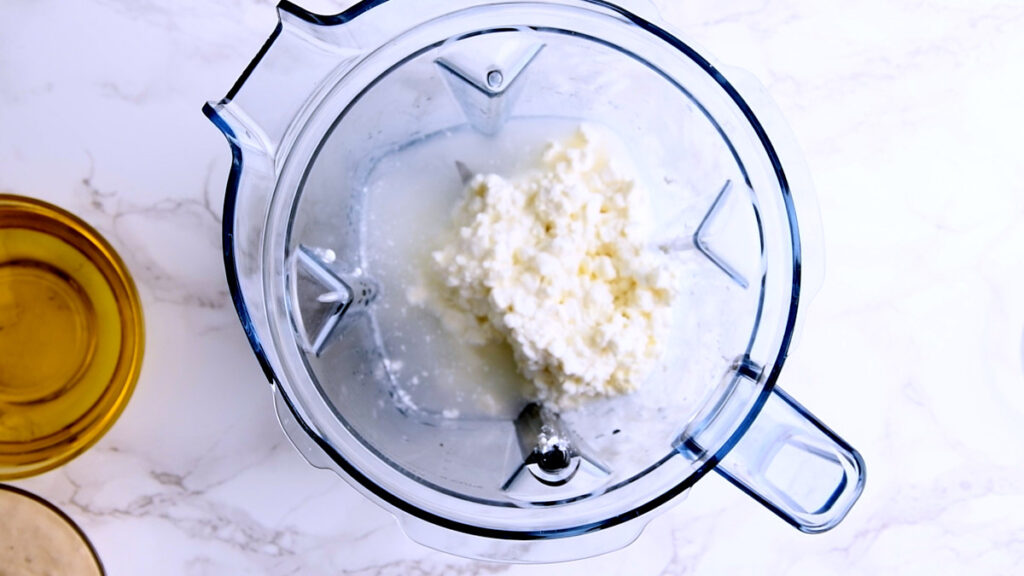
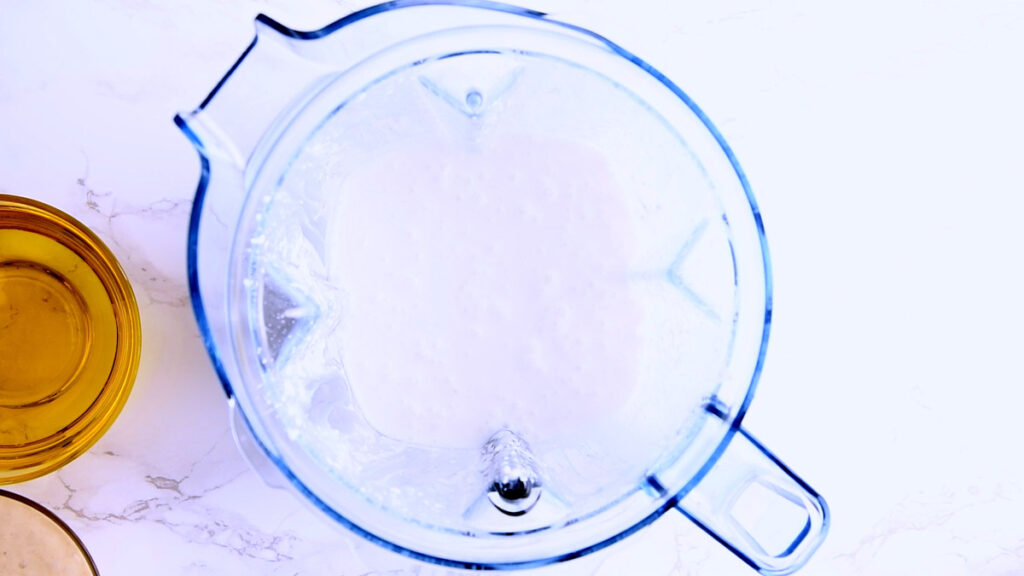
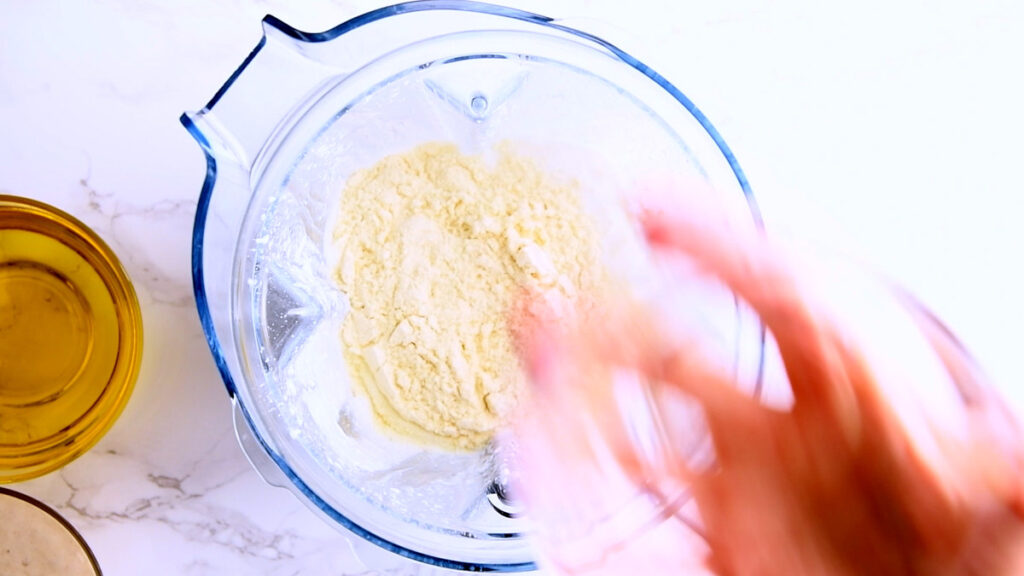
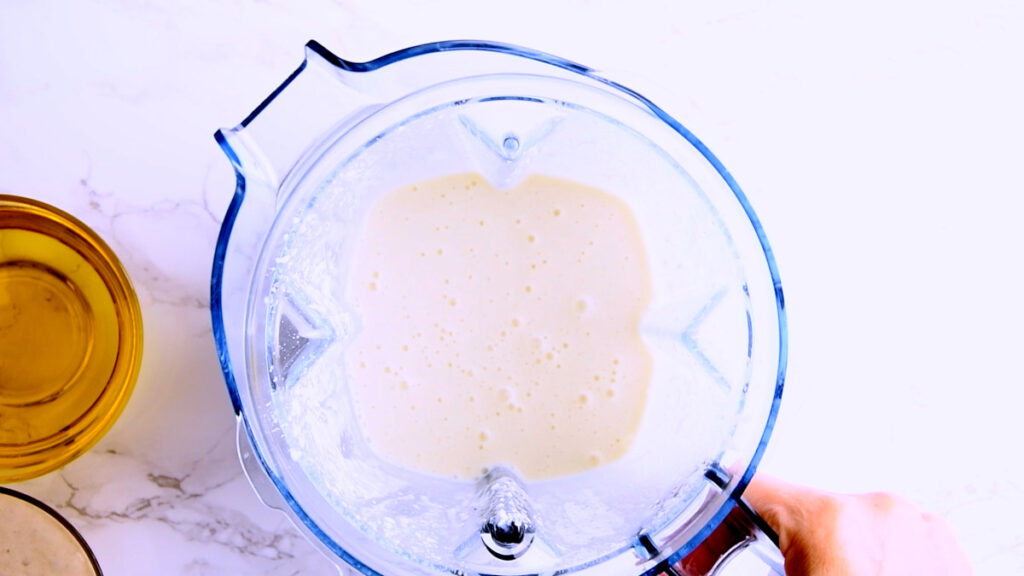
- In a blender, combine the cottage cheese and about 100g of the water. Blend until completely smooth.
- Add the protein powder and blend again until fully incorporated.

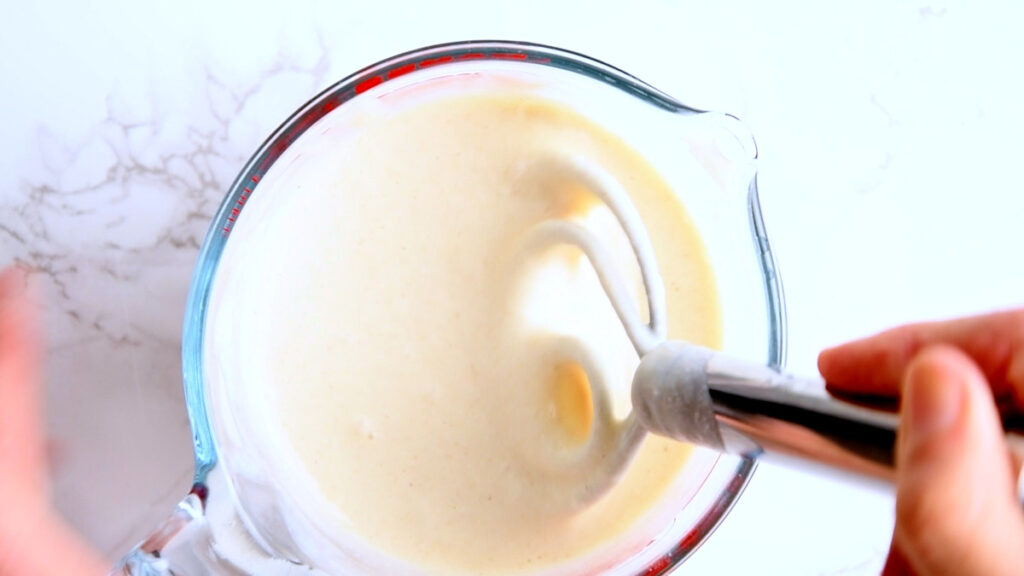
- In a large jug, add the sourdough starter, the remaining 170g of water, and the cottage cheese and protein blend. Mix briefly with a dough whisk or fork. (Don’t blend the sourdough starter. It likes a little gentler treatment).
Mix the DRy Ingredients
- In the bowl of your stand mixer, mix the flour and salt.
Combine The Wet With The Dry
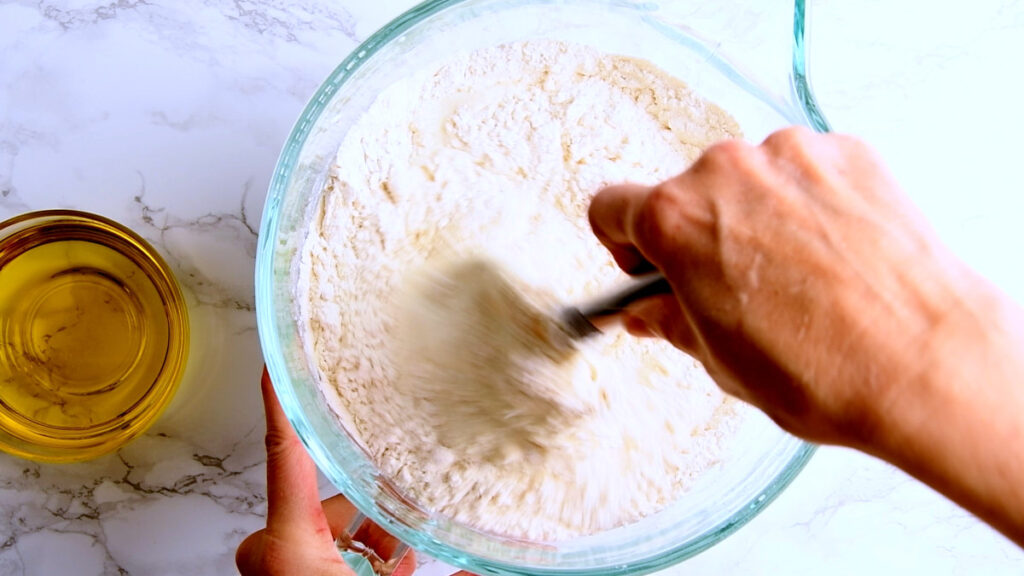

- Pour your sourdough-protein mix into the flour and just briefly and very roughly combine, to give the flour a chance to absorb most of the water before adding oil.
- Using your stand mixer on the lowest speed, start adding the oil in a stream.
- Knead until you have a smooth dough that’s coming away from the sides of the bowl. It will be slightly sticky.
- Leave to rest, covered, for 30 minutes to 1 hour.
Stretch & Folds

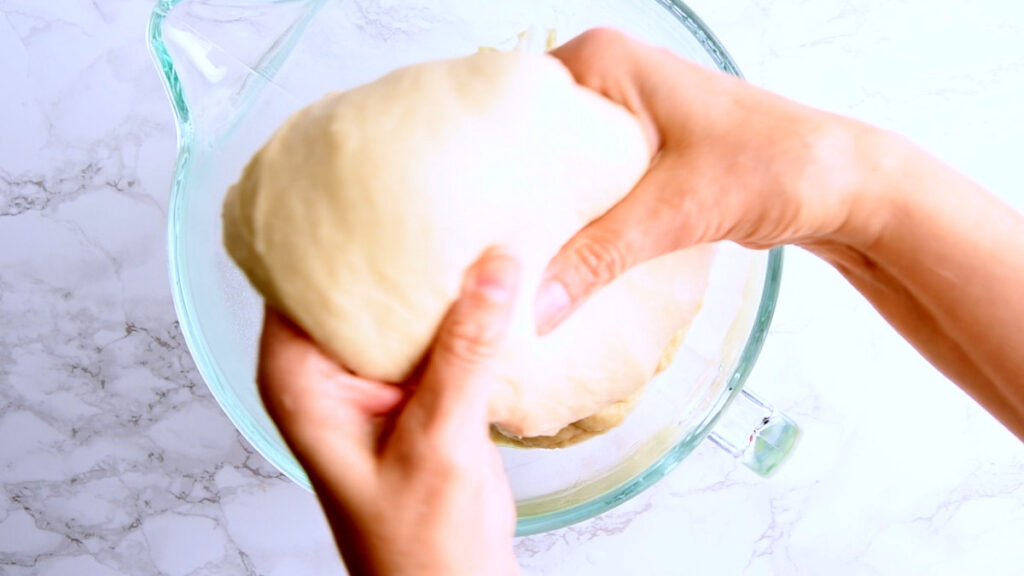

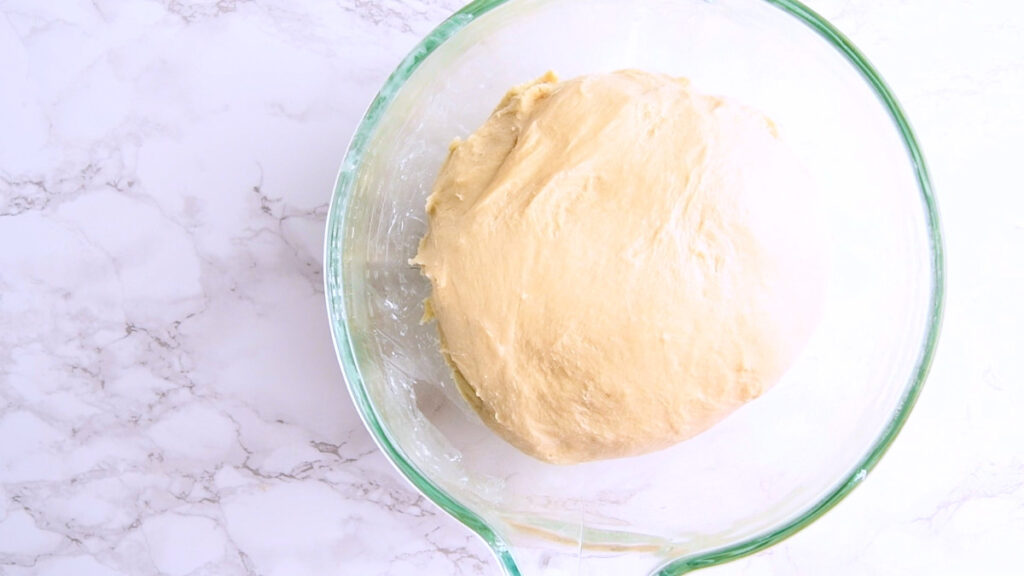
- Over the next 2 hours, perform 3 sets of stretch and folds.
- Using wet hands, for each set, gently stretch a side of the dough up and over the center, then rotate the bowl and repeat on all four sides. This builds strength in the dough.
- Cover the dough and let it rest for 45 minutes between each set.
- After the final fold, cover the container and place it in the refrigerator for an overnight fermentation (8-12 hours).
- Alternatively, if you started early in the morning and have a warm room to ferment your dough, you can leave it until doubled in size and bake the bread sticks in the evening.
The Day Of Baking
In the morning of the next day, remove the dough from the refrigerator and let it sit on the counter for about 1-2 hours to take the chill off. If your dough hasn’t doubled in size yet, leave it to finish its fermentation now.
Prep the Toppings
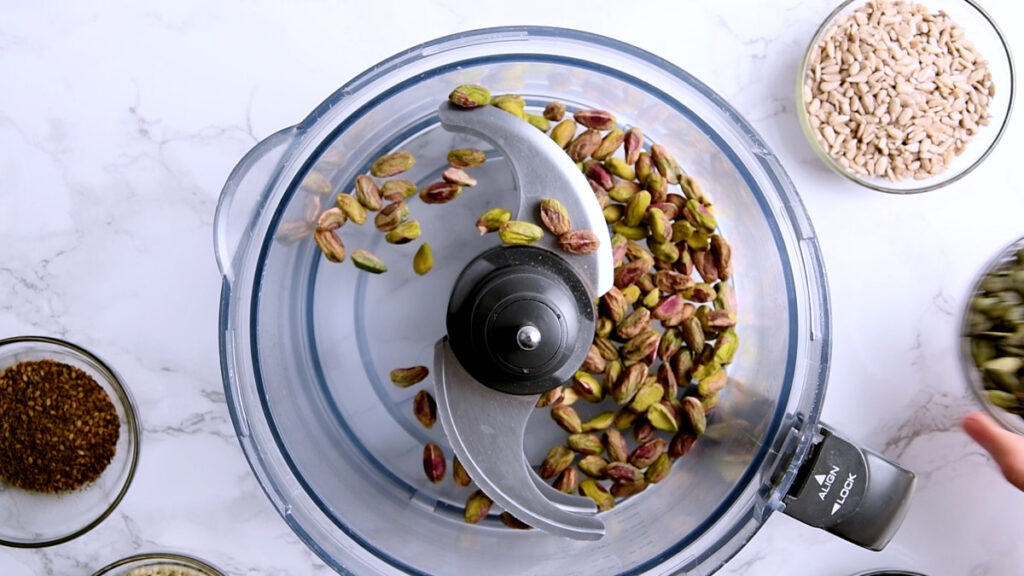


- While the dough is warming up, prepare your nut and seed mix.
- Pulse the pistachios, sunflower seeds, and pumpkin seeds in a food processor until they are broken into smaller chunks.
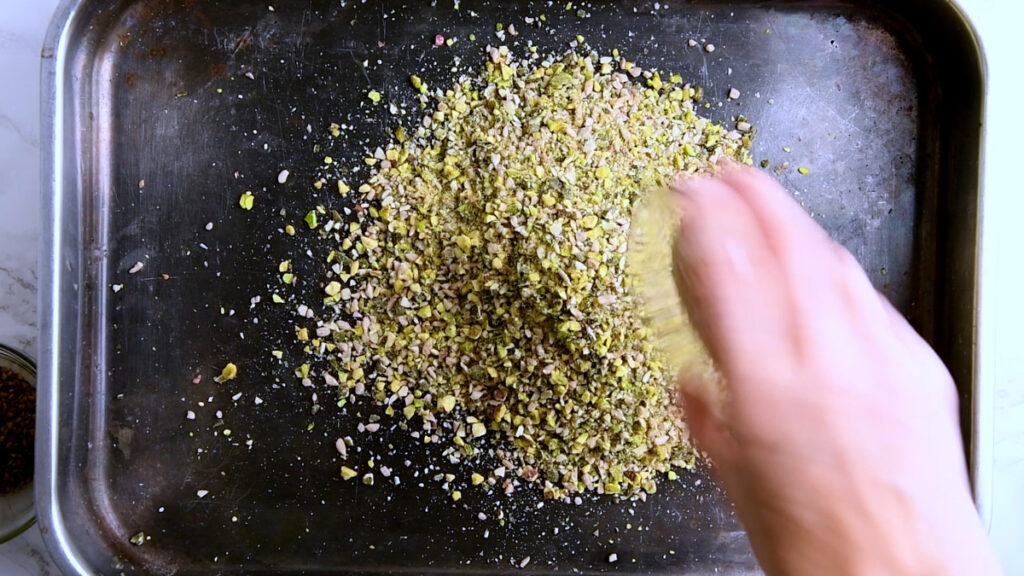

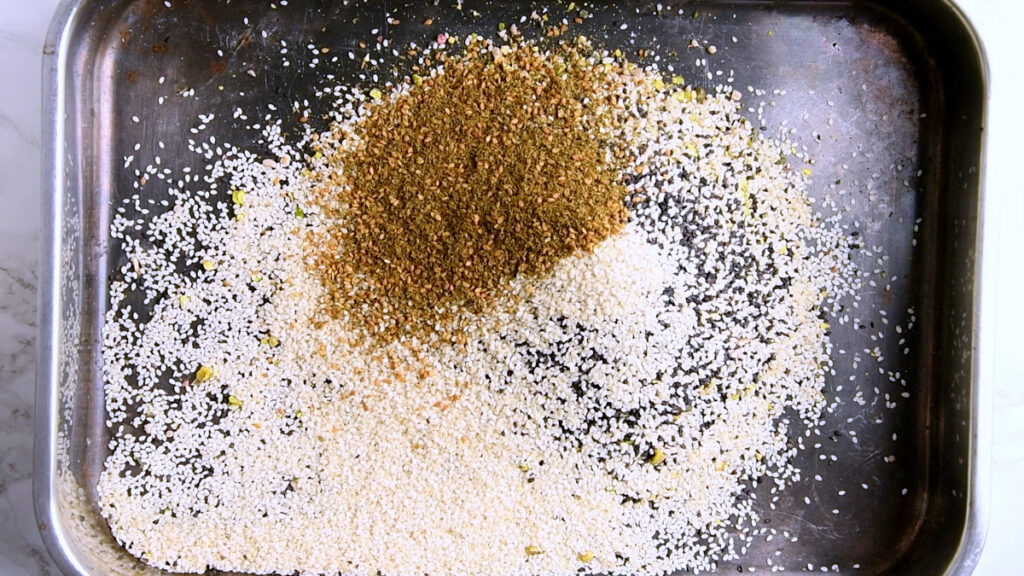

- Transfer to a shallow container (I used a large roasting tin) and mix with the white and black sesame seeds, hemp hearts, flaky salt, and za’atar.
Prep the Date Syrup Dip
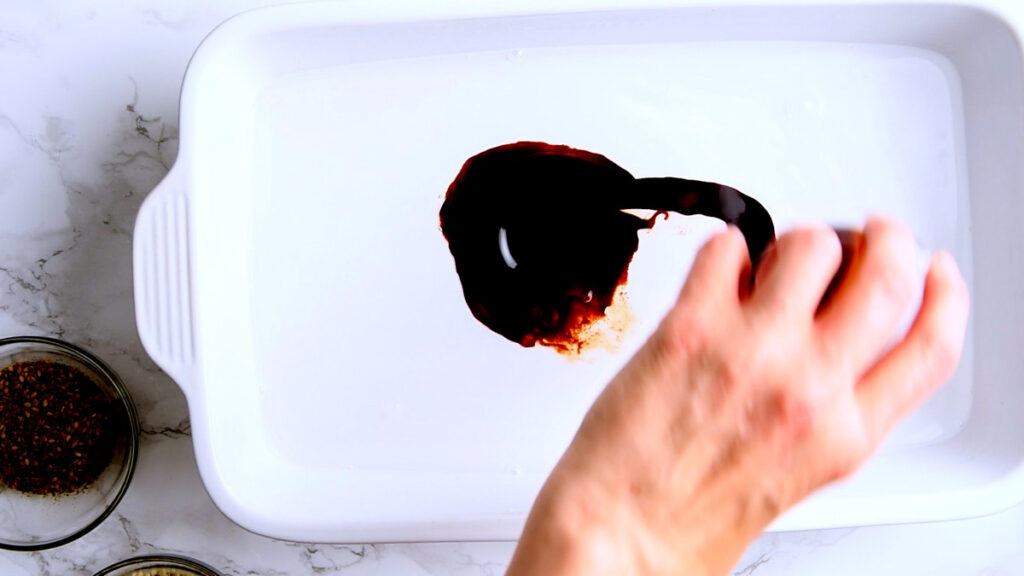
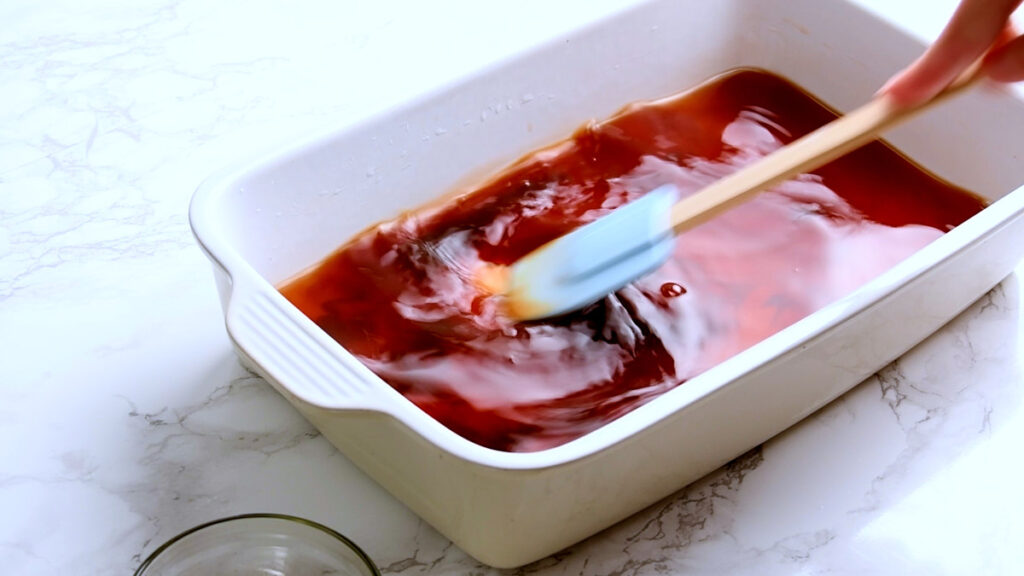
- In a separate large container (big enough to dip your sticks), mix the water and date syrup together until the syrup has dissolved.
Shape the Bread Sticks
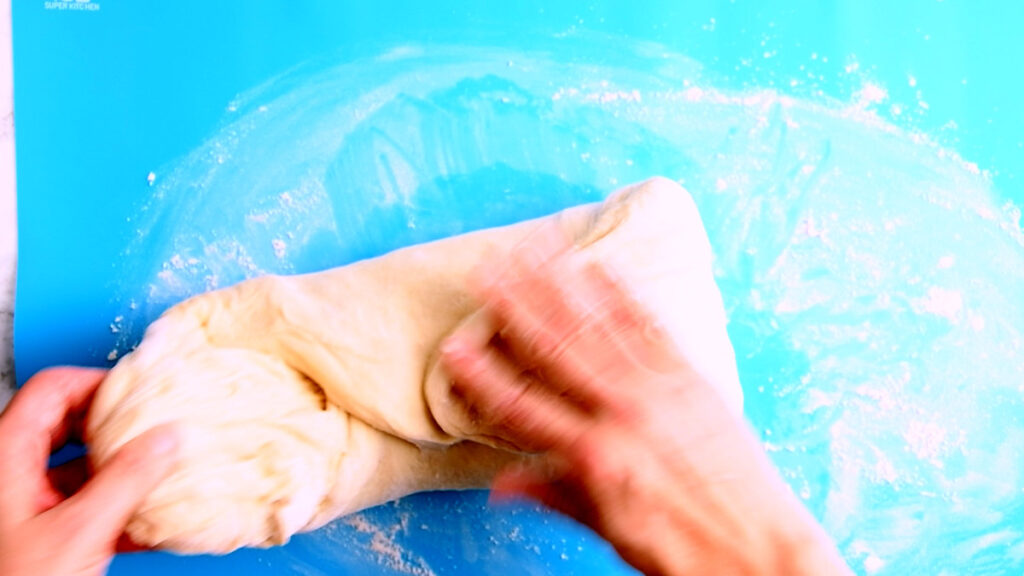
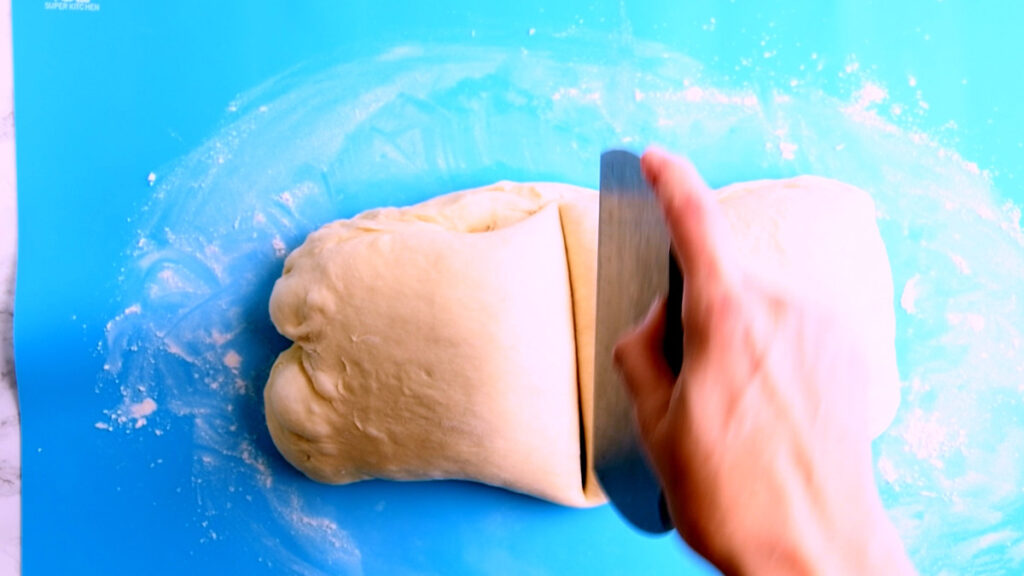
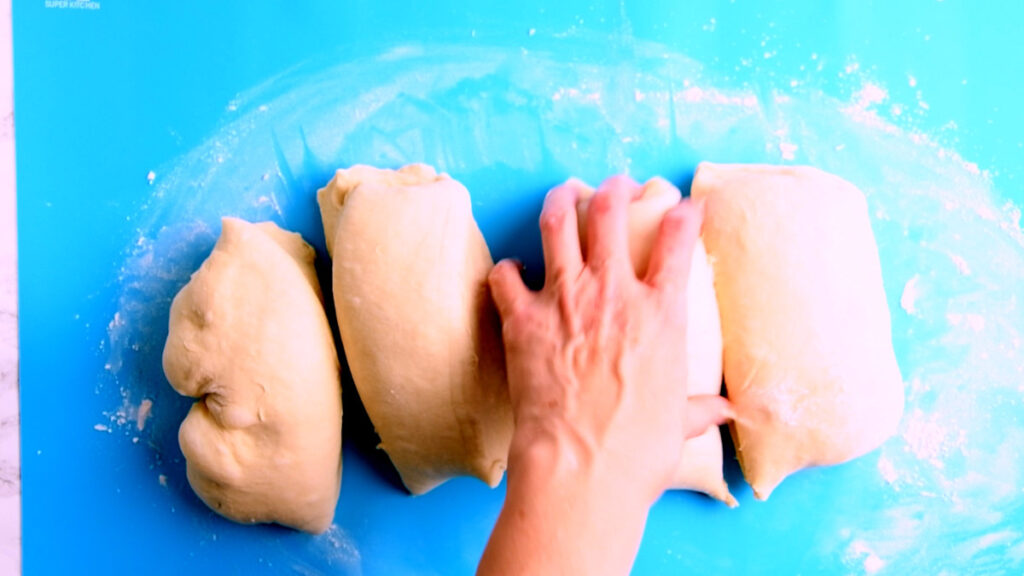

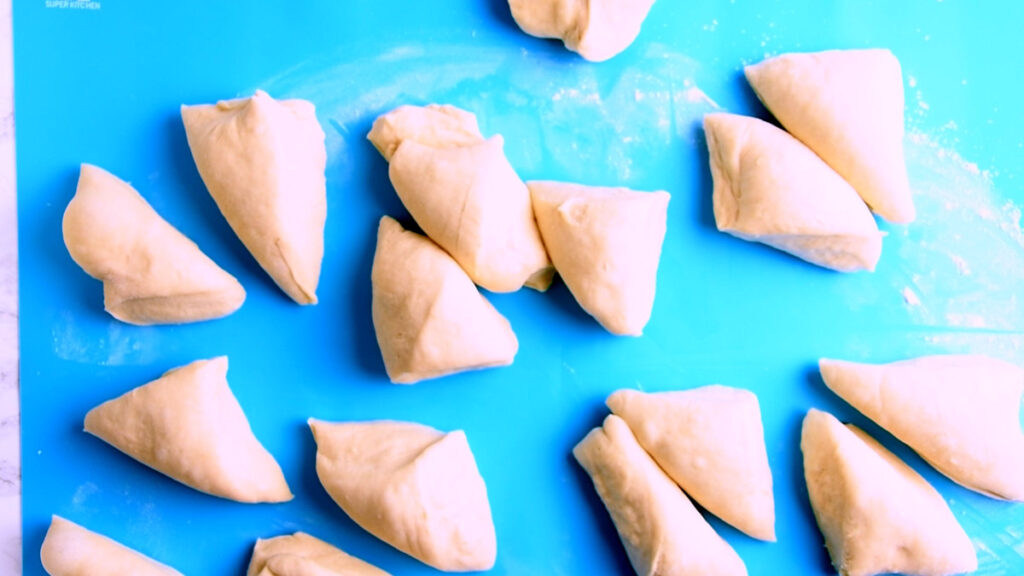
- Gently turn the dough out onto a lightly floured surface.
- Divide it into 16 equal portions, each weighing about 120g.
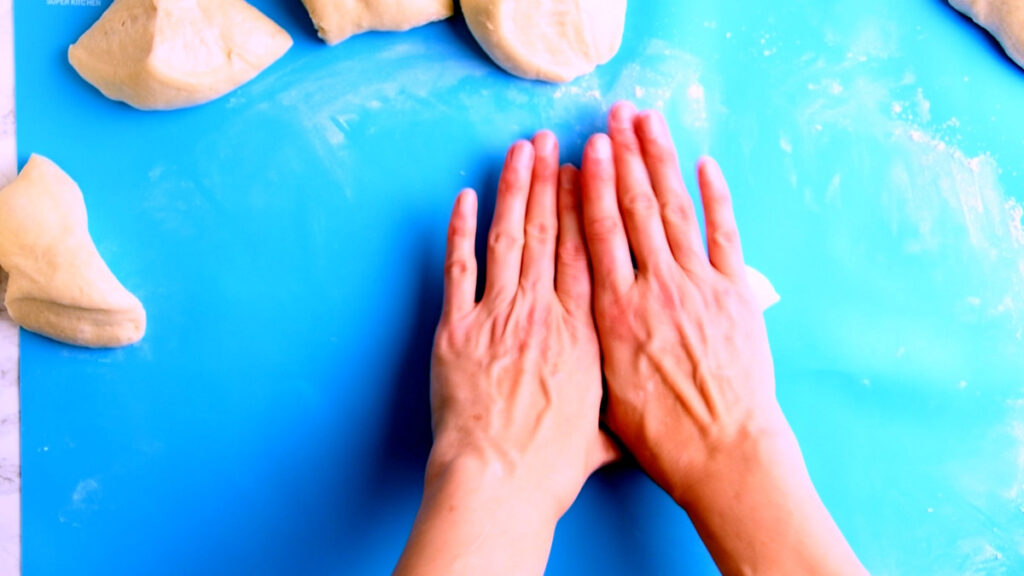
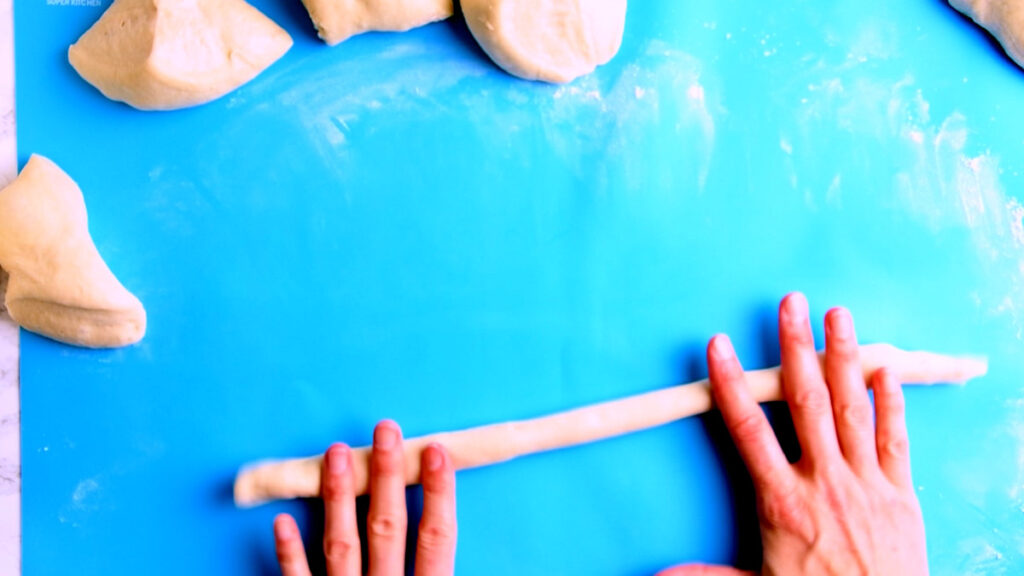
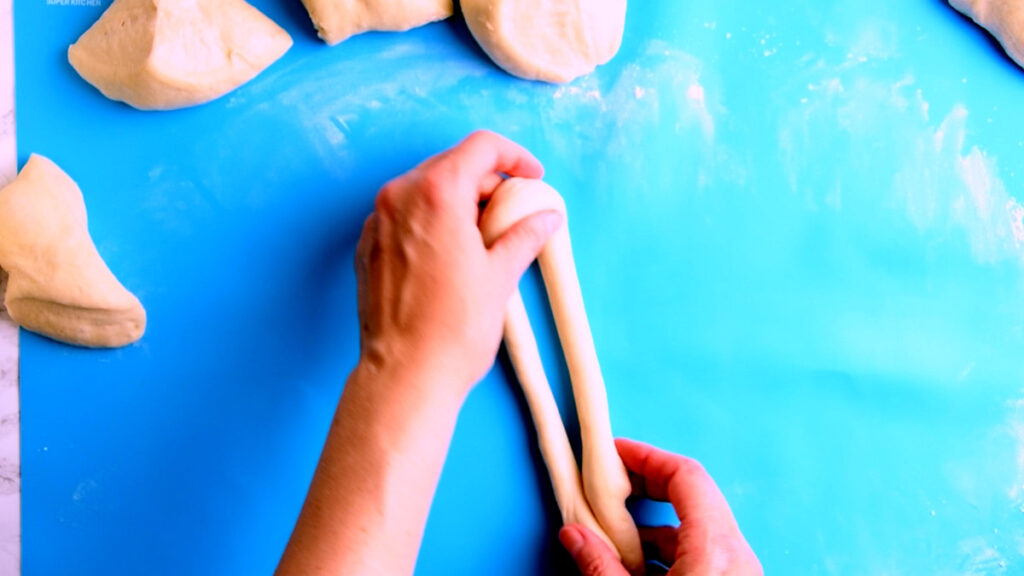
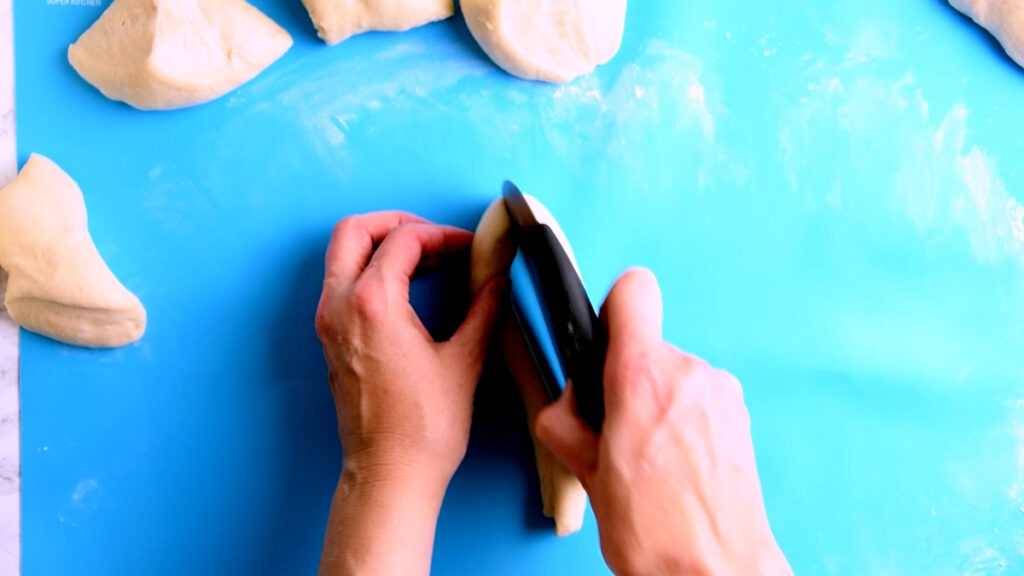


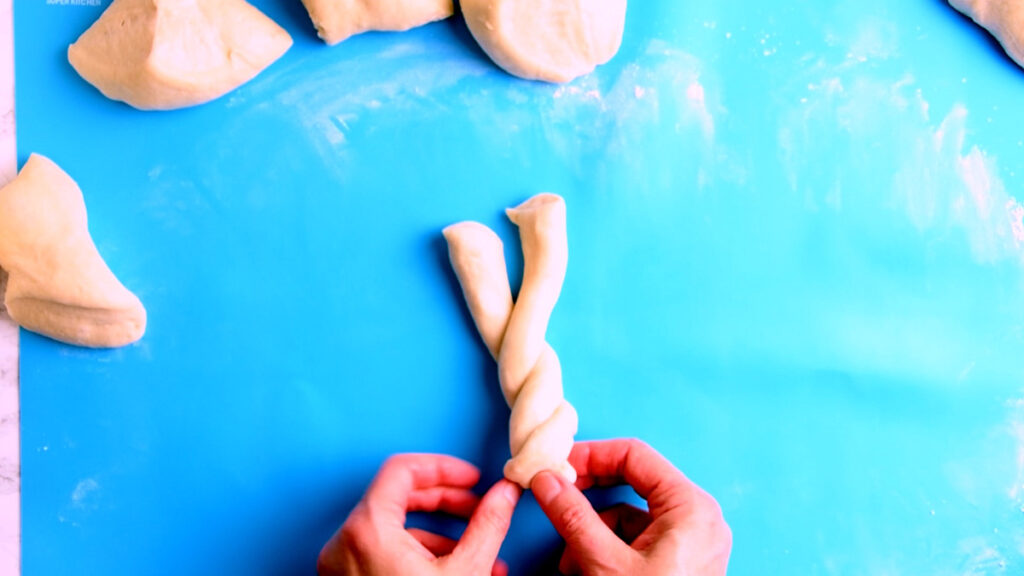

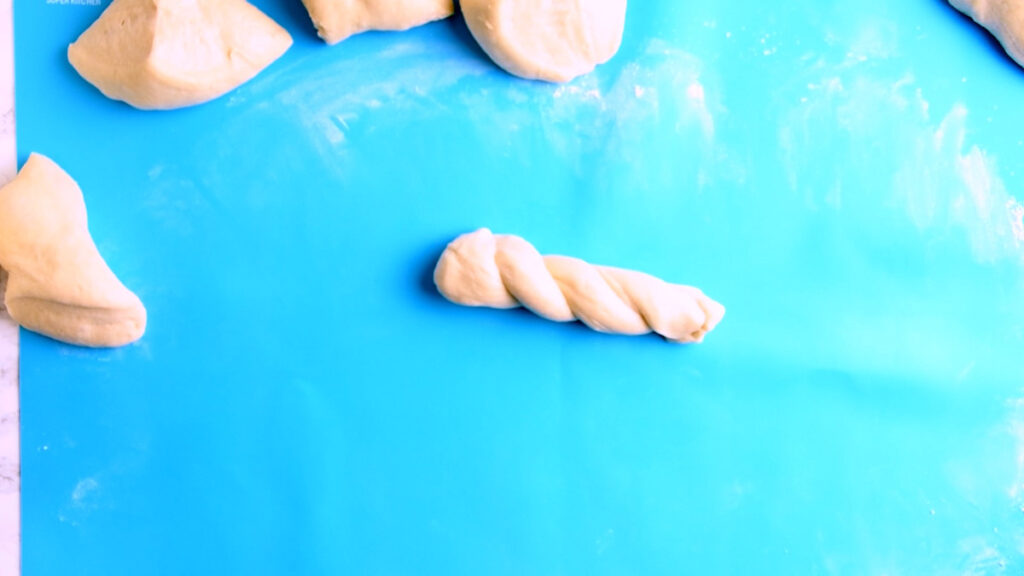
- Take each dough ball and flatten it slightly.
- Roll it into a long, thin snake.
- Cut the snake in half, twist the two halves together, and pinch the ends to seal them.
Coat and Proof
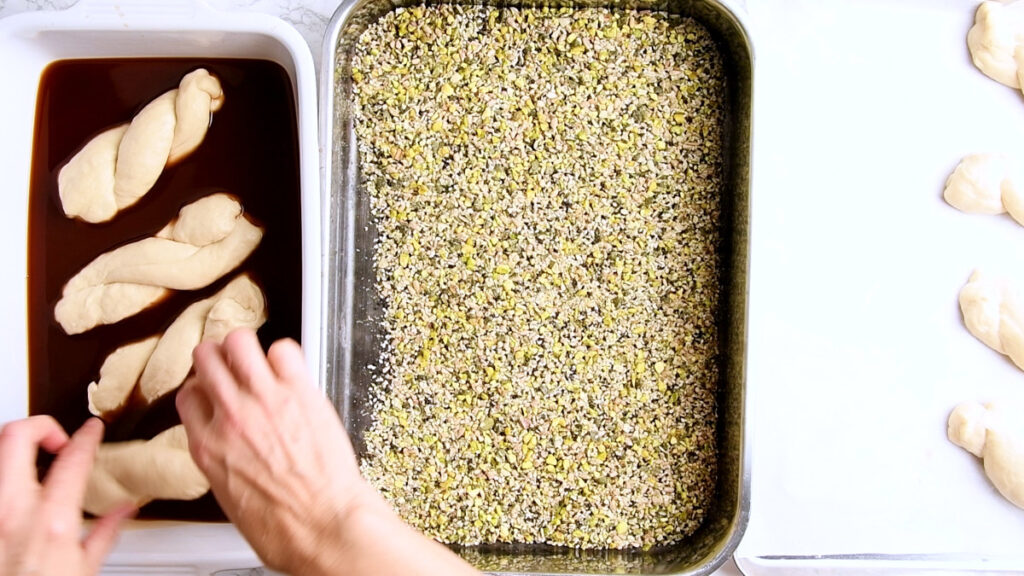
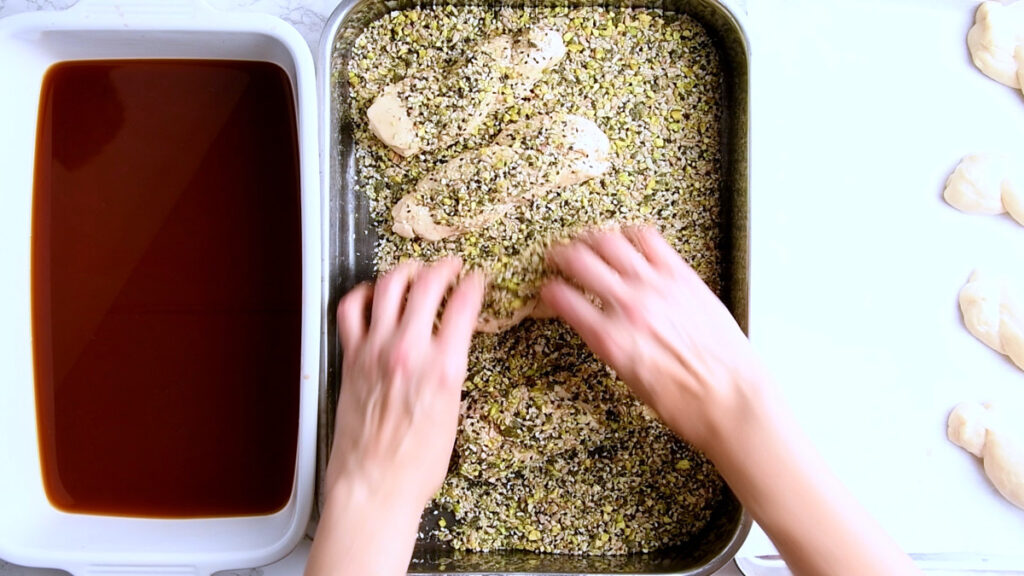

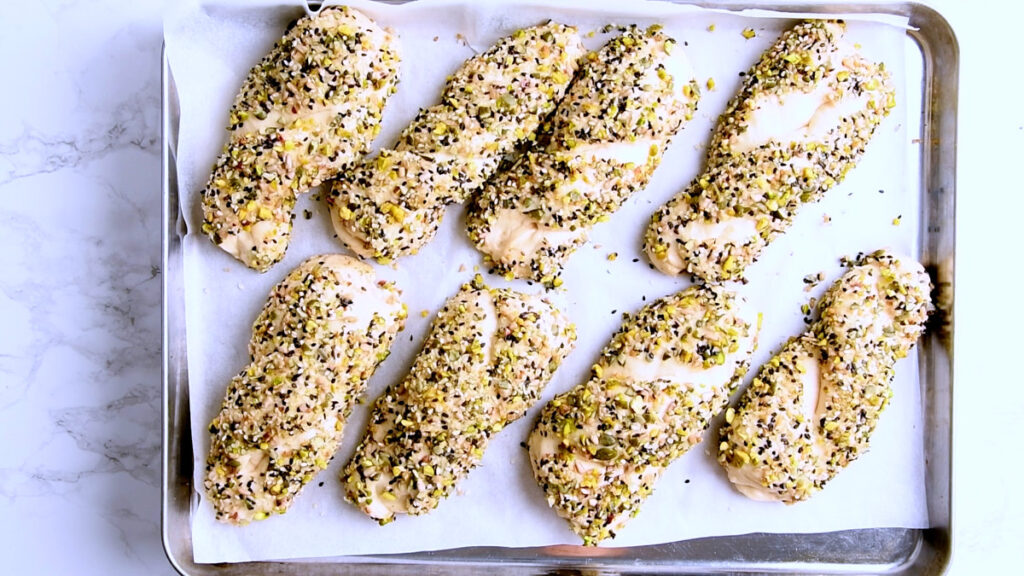
- Dip each twisted breadstick into the sweet water dip.
- Then roll it in the seed mix to coat all sides evenly.
- Arrange the coated breadsticks on a baking sheet, leaving about 2-3 cm of space between them.
- Cover the sheet loosely and let them proof in a warm spot until they are puffy and have doubled in size.
- This final proof may take longer than with a yeasted dough, likely 2-3 hours, if the dough is still cool.
Bake
- Preheat your oven to 350°F/175°C.
- Once the breadsticks have fully proofed, bake them for 25-35 minutes, or until they are a deep golden brown and sound hollow when tapped on the bottom.
- Allow to cool slightly on a wire rack.

Enjoy warm or at room temperature with your favorite toppings, dips, or just as they are as snack.
I love mine with a nice hot coffee for breakfast. Maybe dipped into any leftover seed and nut mix, whisked into a little good quality olive oil.
Watch The Video Here
How To Store
These Seeded Sourdough Protein Challah Breadsticks will keep in an airproof container for about 2 days. You can freshen them up by slightly sprinkling them with water and baking for 5-7 minutes at 350°F/175°C in your oven or air fryer.
They freeze really well for up to 3 months, if you are lucky enough to have any left that long. Mine are always gone much sooner!
FAQ
I thought you’d never ask!
You absolutely can! I would swap the unflavored protein powder for a vanilla version and leave out the Za’atar from the nut mix. Leave out the salt too and you should have a pleasantly sweet version ready to be topped with some jam.
Sure!
At the shaping stage cut it into 3-4 pieces, roll them out and braid.
Brush either with the date syrup mix or with some egg wash.
Rest and bake as above. Probably a little longer than the sticks due to the volume. I’d start checking after 25-30 minutes and take it out once it’s golden brown and sounds hollow when tapped at the bottom.
No problem. Just make it into a Focaccia! They are a fabulous use for any overproofed dough you might have.
Now I’d love to hear from you in the comments!
Have you tried this? Did you enjoy it?
What other recipes would you like to see?
And if you enjoyed this recipe, please consider rating, sharing, or leaving a comment – your feedback truly helps my blog grow!
Other recipes you might enjoy

A classic German Rye Sourdough Bread, but with double the protein.

10 of my best Sourdough Protein Recipes summarized on one site.

Sourdough Protein Challah Bread Sticks
- Total Time: 12 hours 55 minutes
- Yield: 16 1x
Description
These aren’t your average breadsticks. I’ve taken the rich, tender tradition of challah and transformed it into a high-protein, sourdough creation. By replacing some of the classic ingredients with protein-rich alternatives, I’ve created a breadstick that’s not only incredibly delicious but also offers a satisfying, healthier twist. The result? A perfectly fluffy interior with a golden, crunchy, and addictive seeded crust.
Ingredients
For the Sourdough Starter (Levain)
- 50g sourdough starter
- 125g water
- 125g flour
The Dough
- 225g Cottage Cheese
- 250ml water
- 50g Whey Protein Powder
- 70g sugar
- 240g sourdough starter
- 875g strong white bread flour
- 1 tbsp kosher Salt
- 180ml grapeseed oil
Date Syrup Dip
- 480 ml water (2 cups)
- 1 tbsp date syrup (substitute with molasses, sugar or honey)
Seed and Nut Mix
- 1/4 cup sunflower seeds
- 1/2 cup Pistachios
- 1/4 cup pumpkin seeds
- 1/4 hemp hearts
- 1/2 cup white sesame seeds
- 5 tbsp black sesame seeds
- 1 tsp flaky salt
- 1 tbsp Za’atar
Instructions
2 Days before Baking
Feed your sourdough starter. I use a ratio of 50g starter that I top up with 125g water and 125ml water, then stir. It should feel like a very thick pancake batter, maybe even a bit stiffer.
1 Day Before Baking
Or Early Morning If You Want To Bake In The Evening
Prepare the Wet Ingredients
- In a blender, combine the cottage cheese and about 100g of the water. Blend until completely smooth.
- Add the protein powder and blend again until fully incorporated.
- In a large jug, add the sourdough starter, the remaining 170g of water, and the cottage cheese and protein blend. Mix briefly with a dough whisk or fork. (Don’t blend the sourdough starter. It likes a little gentler treatment).
Mix the Dry Ingredients
- In the bowl of your stand mixer, mix the flour and salt.
Combine The Wet With The Dry
-
- Pour your sourdough-protein mix into the flour and just briefly and very roughly combine, to give the flour a chance to absorb most of the water before adding oil.
-
- Using your stand mixer on the lowest speed, start adding the oil in a stream.
-
- Knead until you have a smooth dough that’s coming away from the sides of the bowl. It will be slightly sticky.
-
- Leave to rest, covered, for 30 minutes to 1 hour.
Stretch & Folds
-
- Over the next 2 hours, perform 3 sets of stretch and folds.
-
- Using wet hands, for each set, gently stretch a side of the dough up and over the center, then rotate the bowl and repeat on all four sides. This builds strength in the dough.
-
- Cover the dough and let it rest for 45 minutes between each set.
-
- After the final fold, cover the container and place it in the refrigerator for an overnight fermentation (8-12 hours).
-
- Alternatively, if you started early in the morning and have a warm room to ferment your dough, you can leave it until doubled in size and bake the bread sticks in the evening.
The Day Of Baking
In the morning of the next day, remove the dough from the refrigerator and let it sit on the counter for about 1-2 hours to take the chill off. If your dough hasn’t doubled in size yet, leave it to finish its fermentation now.
Prep the Toppings
-
- While the dough is warming up, prepare your nut and seed mix.
-
- Pulse the pistachios, sunflower seeds, and pumpkin seeds in a food processor until they are broken into smaller chunks.
-
- Transfer to a shallow container (I used a large roasting tin) and mix with the white and black sesame seeds, hemp hearts, flaky salt, and za’atar.
Prep the Date Syrup Dip
-
- In a separate large container (big enough to dip your sticks), mix the water and date syrup together until the syrup has dissolved.
Shape the Bread Sticks
-
- Gently turn the dough out onto a lightly floured surface.
-
- Divide it into 16 equal portions, each weighing about 120g.
-
- Take each dough ball and flatten it slightly.
-
- Roll it into a long, thin snake.
-
- Cut the snake in half, twist the two halves together, and pinch the ends to seal them.
Coat and Proof
-
- Dip each twisted breadstick into the sweet water dip.
-
- Then roll it in the seed mix to coat all sides evenly.
-
- Arrange the coated breadsticks on a baking sheet, leaving about 2-3 cm of space between them.
-
- Cover the sheet loosely and let them proof in a warm spot until they are puffy and have doubled in size.
-
- This final proof may take longer than with a yeasted dough, likely 2-3 hours, if the dough is still cool.
Bake
-
- Preheat your oven to 350°F/175°C.
-
- Once the breadsticks have fully proofed, bake them for 25-35 minutes, or until they are a deep golden brown and sound hollow when tapped on the bottom.
-
- Allow to cool slightly on a wire rack.
Enjoy warm or at room temperature with your favorite toppings, dips, or just as they are as snack.
I love mine with a nice hot coffee for breakfast. Maybe dipped into any leftover seed and nut mix, whisked into a little good quality olive oil.
- Prep Time: 30 minutes
- Fermentation: 12 hours
- Cook Time: 25 minutes
- Category: Bread & Sourdough
- Method: Bake
- Cuisine: Fusion


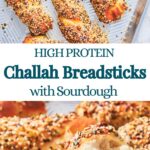
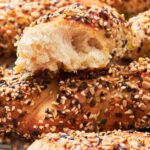

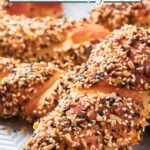

I made the sourdough protein challah bread sticks and they came out soft, chewy, and full of flavor.
Oh good, so happy they worked for you!
Thanks for letting me know. 🙂
I feel like this recipe was made for me! I’m all about all things sourdough and protein right now..these breadsticks were perfection! I loved everything about them!
Aww, thank you! That makes me so happy to read. 🙂
These breadsticks are incredible! I love making new sourdough recipes, and this is a new favorite. So good!
I’m so happy to hear that (and even happier to provide all new recipes over and over). Thanks fopr letting me know. 🙂
My family loved these! (And I love a sneaky way to get more protein in!)
That’s great to hear! Thanks so much for taking the time to comment. 🙂
These protein breadsticks were AMAZING! Such a great sourdough recipe.
Aww, thank you so much! Glad you enjoyed them.